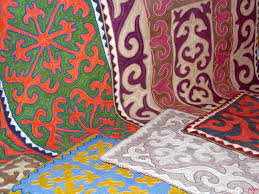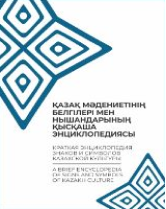




Kiiz (felt) is rightly considered a cult material of the nomads, who were aware of the properties of wool, its thermal insulation and healing properties, as evidenced by the widespread use of wool/felt: from houses/forts to clothing and other household items. Some scholars believe that felt is etymologically related to the common Turkish word üylyk, meaning something for the home.
Sheep wool served as a marker of sacred space in Turkish culture and was involved in many traditional ceremonies. Sheep shearing was preceded by a “koi kyrkar” ritual in which everyone who came to the event was treated to a meal. People who came to the sheep shearing greeted their hosts with wishes for a good sheep shearing, which took place on well-defined days of the week: Wednesday, Thursday and Saturday. The Hittites once dedicated sheep shearing to the female deity Kamrusece, the goddess of the underworld, and according to Christian beliefs, sheep shearing in Old Testament times was celebrated with a feast to which relatives and neighbours were invited.
The process of felting was also sacralized, which in Turkic culture was an occasion for fellowship and communal creation, accompanied by ritual songs, recitations, ritual acts, feasts, and games. In felting, for example, the hostess or one of the masters would spread a white drink, milk or ayran, on the edges and centre of a rolled-up roll and sing along: Aqtai Qūdai zharylqasyn! “May the Almighty create everything as white”, kiiz zhaksy bop shyksyn! “Let felt be good/quality”.


